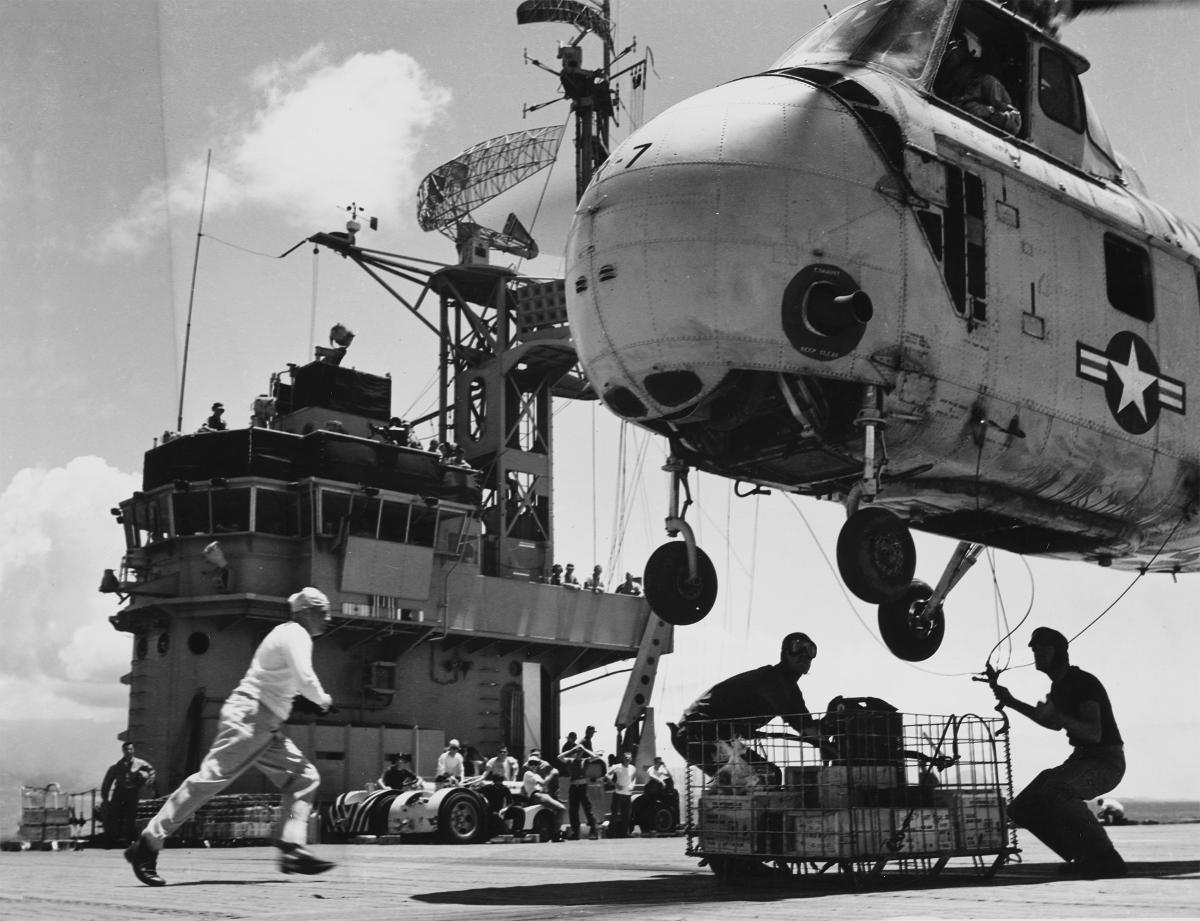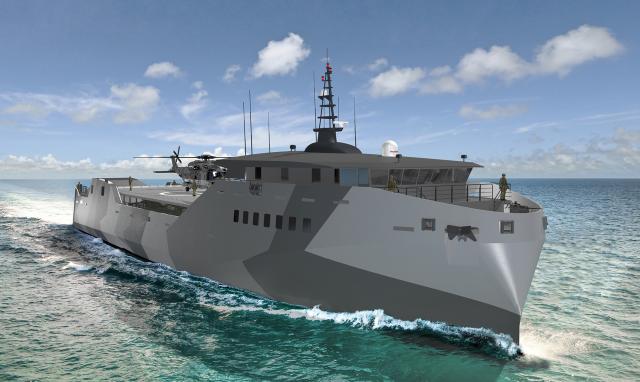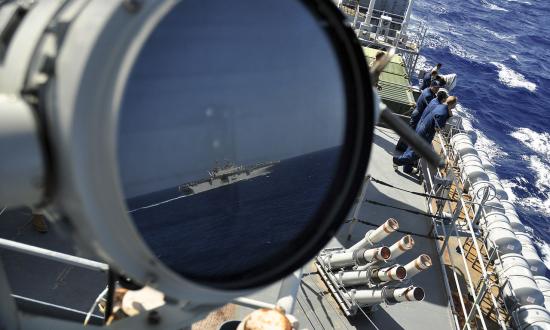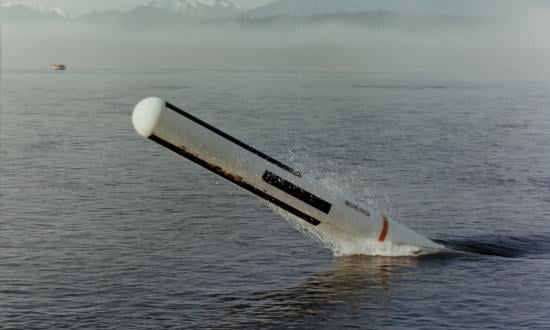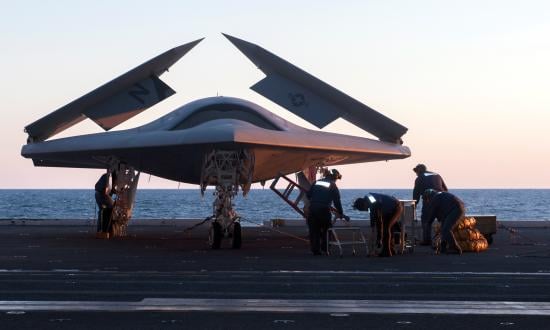The amphibious ships that transport the U.S. Marine Corps to hostile shores have undergone major changes over the past 80 years. In World War II, the fleet transformed from a force of hastily converted civilian commercial vessels to an armada of thousands of mass-produced ships and boats in a matter of months. The Cold War saw amphibious ships change radically to incorporate new landing craft technology, while post–Cold War types consolidated and grew larger. Today’s fleet is on the cusp of yet another transformation, with planners again eyeing small ships to survive war with a near-peer competitor in the Pacific.
In the late 1930s, the Marine Corps and Navy watched with growing unease as the situations in Europe and Asia deteriorated. Japan’s expansion of its war in China in 1937 and Germany’s annexation of Czechoslovakia in 1938 did not make war inevitable for the United States but did prompt the question: If the United States were to become involved in a global war, how would it ship millions of troops thousands of miles to widely separated battle zones? Washington increased the size of the civilian Merchant Marine and maintained a credible fleet of warships, but economic depression and widespread isolationism meant offensive amphibious shipping of the kind necessary to put foreign shores at risk was not forthcoming.
The attack on Pearl Harbor changed the U.S. strategic outlook overnight. It was clear very early that the neglected amphibious capability would be the key to victory. Japan’s Pacific campaign would require an amphibious fleet to reverse, and Italy’s long coastlines were vulnerable to seaborne invasion. Germany was largely invulnerable to seaborne attack, but its conquests in Norway, France, and North Africa were not—and could only be liberated by amphibious invasion.
U.S. entry into the war did not exactly catch the Navy and the Marine Corps flat-footed. A British contract for 60 Ocean-class cargo ships had boosted domestic shipyard capacity, with the first ship launched in August 1941. The following month, the United States began construction of a new type of cargo ship, the Liberty ship, based on the Ocean class and optimized for mass production. By May 1945, shipyards had produced 2,710 of them, an average of three ships every two days.
At least as important as the number of hulls were the dozens of new types of amphibious ships that carried anywhere from 36 to 1,500 landing force personnel, a bewildering variety of ship types to handle the complexities of putting a modern ground force ashore. Ships were built to carry other ships (i.e., landing craft) to facilitate purely seaborne landings. The island-hopping nature of the Pacific war necessitated invasion forces operating far from friendly ports and other facilities.
Liberty ships formed the backbone of the cargo fleet, but more types were needed to carry troops. The attack transports (APAs) consisted of nearly 400 ships divided among 19 different classes, many of which comprised only a handful of ships. These served early in the war, especially the 1942 campaign in the Solomons. The Haskell class, based on the Liberty ship, was particularly numerous; shipyards built 117. Although APAs varied in size, on average they carried 1,000 to 1,500 soldiers or Marines, plus the landing craft to put them ashore.
The service also built landing ships, tank (LSTs), warships capable of long-distance travel carrying M4 Sherman tanks and other heavy vehicles. LSTs were constructed for shallow water operation, allowing them to steam right up to the shoreline and discharge their cargo onto the beach or in shallow water. Landing ships, dock (LSDs), were built as motherships meant to carry smaller landing craft, tank (LCTs), carrying armor; landing craft, medium (LCMs), loaded with cargo; landing vehicles, tracked (LVTs, also known as AmTracs); and DUKW wheeled amphibious vehicles (preserved today as Duck Boats).
By Japan’s surrender in 1945—which resulted in part from the success of the Navy’s amphibious strategy—the service counted 2,547 large amphibious ships and thousands more smaller ones. Peacetime caused these numbers to become a glut, and by June 1950, the Navy had cut the amphibious force to just 79 ships.
In the 1950s, amphibious planners, confronted with both the vastness of the Soviet bloc and the terrible destructive power of nuclear weapons, needed a way to conduct long-range operations while dispersing to avoid nuclear attack. They investigated using seaplanes, helicopters, and even submarines to ferry troops long distances.
The ship-based helicopter eventually won and quickly became as or more important to a landing force than landing craft themselves. The helicopter added a third dimension to amphibious assault, allowing a landing force to seize objectives inland and complement a beach landing. Helicopters such as the Sikorsky H-34 also had the range necessary to allow an invasion fleet to disperse in case of nuclear attack. The Navy originally used ex–World War II escort carriers such as the USS Thetis Bay (CVE-90/CVHA-1/LPH-6) as helicopter carriers, but in the late 1950s began construction of purpose-built helicopter landing ships. Outwardly similar to contemporary aircraft carriers, the Iwo Jima–class amphibious assault ships (LPHs, sometimes called landing platforms, helicopter) embarked only rotary-wing aircraft.
The 1970s produced the pinnacle of the new air-sea amphibious team in the Tarawa-class LHA amphibious assault ships, the first to combine the full-length flight deck and hangar of the Iwo Jima class with the docking well of Austin-class amphibious transport dock (LPD) ships. The result was the largest purpose-built amphibious ship to date, 820 feet long and 39,300 tons fully loaded, with accommodations for 1,700 Marines.
Amphibious ship numbers and capabilities began to decline with the end of the Cold War. When the Soviet Union dissolved in 1991, the U.S. Navy had 61 amphibious ships, and just 38 by 1994. As older ships retired, they were replaced by larger, more capable ones easier to defend as the defense budget retreated. The Austin-class LPDs and Newport-class LSTs were replaced by the much larger San Antonio–class ships, while the Navy replaced the Tarawas with the Wasp- and America-class amphibious assault ships. The V-22 Osprey tiltrotor and the landing craft, air cushion (LCAC), hovercraft allowed amphibious ships to sit farther off an adversary’s coastline than ever before, protecting them from shore-launched antiship missiles.
China’s rise over the past decade has provoked the most recent shift in U.S. amphibious forces. The People’s Liberation Army Navy (PLAN) has turned the western Pacific into a potential battleground. China’s expansion and militarization of the Paracel and Spratly Islands in the South China Sea has made those rocks and shoals strategic prizes, whose loss would be a major political and military setback for Beijing.
Anticipating this fight, the Marine Corps and Navy are shifting to a new concept called expeditionary advanced base operations (EABO). EABO envisions small, dispersed groups of Marine air and land forces operating over a broad area—such as an island archipelago—to fight a maritime campaign under the nose of a well-armed adversary. EABO would typically see smaller platoon- or company-sized units moving from one island to another, providing security for surface-to-air missiles, rocket artillery, or antiship missiles.
Smaller amphibious forces will necessitate smaller ships, and the Marine Corps is reportedly considering a fleet of 28 to 30 new light amphibious warships (LAWs). Each LAW would be a minimum of 200 feet long, have at least 8,000 square feet of cargo space, a bow or stern landing ramp, and a range of 3,500 miles. Small and dispersed over hundreds of square miles of ocean, these warships could act in concert with larger, more capable amphibious ships to push Chinese forces back toward the mainland.
The technology of the Navy’s amphibious forces has changed substantially through its four major evolutions over the past 80-plus years, but its purpose—to seize territory from the enemy by attack from the sea—has not. While a future war might be fought with hypersonic weapons, ballistic missiles, and stealth aircraft, amphibious ships and the landing forces they deliver ultimately will be the key to victory.



